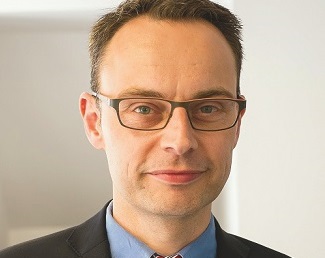A boost for Scotland’s mental health but much more to do
Posted by See Me, 7 September 2018
Director Calum Irving reflects on the Programme for Government announced this week by the First Minister.

With a wee bit of time I’ve been able to read and digest the Programme for Government announced this week by the First Minister. Clearly mental health is front and centre stage and rightly so. It came on a day where we learnt of more evidence that young people aren’t getting the support they need. A task force lead by Dame Denise Coia, which a number of our young volunteers are contributing to, could lead to some promising changes in that much needed area of support. The Programme announced new school nursing and counselling services, better resources for teachers and mental health first aid training for teachers. There was much more too; on CBT, the 111 service and maternal mental health.
I also appreciate a focus on prevention and re-iterating that we need to value mental health as much as physical health.
But – and there’s always a but – the First Minister also stated that; “As the stigma around mental health reduces, demand for services is rising.” That’s right up to a point. I think stigma is reducing, in part due to the fact that See Me, it’s volunteers, campaigns, and partners have made a huge effort over the years. Public awareness is high and some help seeking may be due to less stigma. But more help seeking is also likely to be related to the challenges many people face. We know that the risk of poor mental health rises for people experiencing poverty and other inequalities. We can’t ignore the effect of distress from a punitive benefits system, ten years of depressed incomes and over stretched public services. Nor can we ignore the pressures on young people that cause distress. Social media is often cited but so too should exam pressure, insecure employment and escalating rent.
Also, stigma is a broad term. At See Me we think fewer people experience self-stigma – the fear of the reaction of others. We also believe societal stigma (what I’d call prejudice) is getting better. But the stigma that is more accurately called discrimination is stubborn to shift. So discrimination in the workplace means not being treated compassionately, being disbelieved or ostracised. Some of this discrimination comes from unacceptable prejudicial attitudes but some comes from a lack of knowledge and fear of getting it wrong. Only last week three of our young volunteers were speaking to the media and shared how they’d been told they were being “Drama Queens” when they asked for help. Some people say to me “but isn’t some of this all a bit fashionable”. Demeaning somebody’s experience and dismissing someone asking for help is shocking. So stigma – perhaps better described as prejudice or discrimination - still needs to be challenged and knowledge still needs to be built.
See Me and those we work with need to focus on changing prejudicial and discriminatory behaviour.
So what does all this mean for the Programme for Government? Firstly how we make those big changes promised matters and secondly what else do we do alongside matters just as much. On the first that means that investment in existing and new professionals, be they in school, the health service or elsewhere, needs to include a strong understanding and ability to recognise and tackle stigma and discrimination. Support needs to be compassionate and without prejudice. But those around these trained professionals also need to be on the ‘same page’. That means the first point of contact needs to be free from stigma and compassionate too, be that on the phone, with the GP or a care worker. The same is true particularly of the school environment. Many people come into contact with a young person in their daily lives and we must look at a ‘whole school’ environment. That means fellow students, all school staff, parents and more need to understand mental health and be able to recognise and challenge stigma. And the same is true of employers; line mangers, colleagues, the CEO - everyone has a part to play.
Secondly it also means taking action to reduce distress: to take a public mental health approach. In such an approach we could isolate those things that seem to cause the most distress, tackle them at source and build better support to cope with them if they do happen. Just one example; the new Scottish Social Security system. See Me and a lot of people with lived experience have fed into the design of the new system. It must be without prejudice itself, act compassionately, recognise fluctuating conditions and retain lived experience knowledge in its design, implementation and review. It’s one example but our good mental health will be determined by much more than the Programme for Government. It’s time to think about how all public policy can contribute to better mental health and how discriminatory behaviour can be tackled right across the areas important to all our lives.
